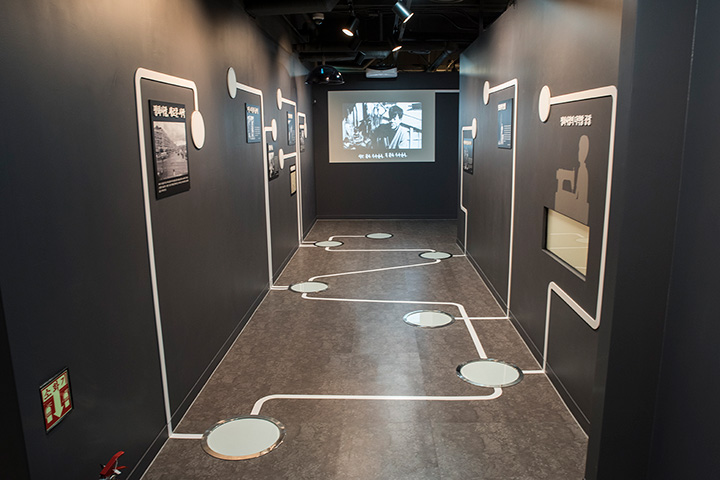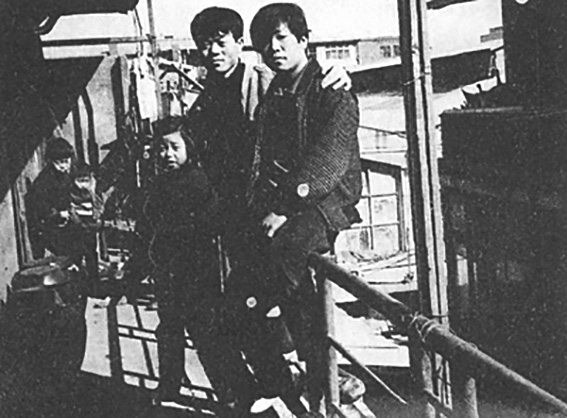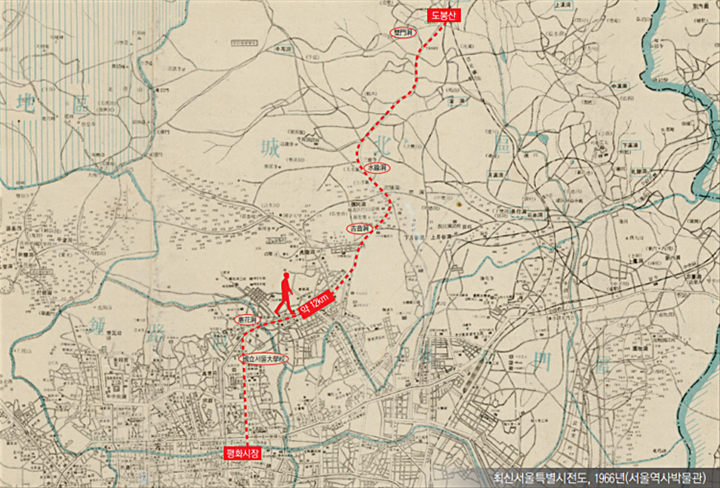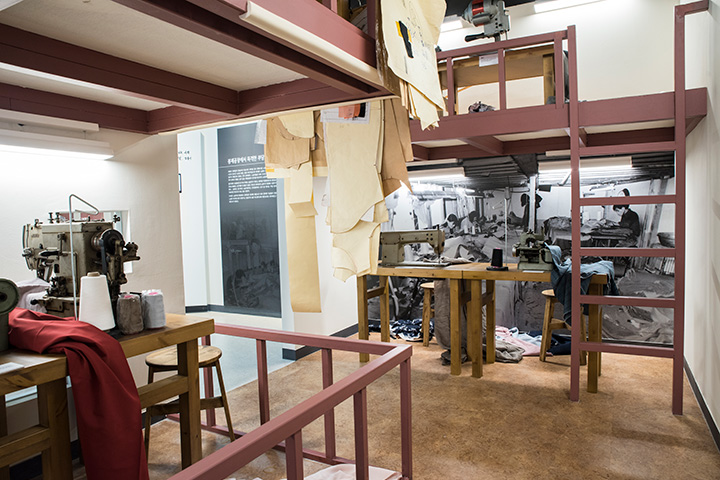
Tae-il became a garment worker at the Pyeonghwa Market at the age of 18. In August 1965, with the idea that he would learn skills at a stable job and take responsibility for his livelihood, he got his first job at the 3.1 (Sam-il) company as a sida (an apprentice at a sewing factory).
However, Tae-il’s excitement did not last long. Working conditions in the Pyeonghwa Market were dreadful. Young children aged 12–15 years worked 15 hours a day in dark and dusty sewing sweatshops for 50 won, the price of a cup of coffee at the time. He bought a pul-bbang (pancake stuffed with sweetened bean paste) with his bus fare for those who failed to eat lunch properly with their low wages and walked back home after work for about three hours from Dongdaemun to Dobongsan. Once on his way back home after 10 p.m., he was caught in a police box during the curfew. The pul-bbang sharing ritual continued for 3–4 years.
Tae-il thought that it was unfair that the young sida were not properly paid for their work. Therefore, he quit the sewing job to become a tailor. He believed that if he became a tailor, it would be possible for him to manage the wages, joining, and dismissal of workers.
However, Tae-il’s excitement did not last long. Working conditions in the Pyeonghwa Market were dreadful. Young children aged 12–15 years worked 15 hours a day in dark and dusty sewing sweatshops for 50 won, the price of a cup of coffee at the time. He bought a pul-bbang (pancake stuffed with sweetened bean paste) with his bus fare for those who failed to eat lunch properly with their low wages and walked back home after work for about three hours from Dongdaemun to Dobongsan. Once on his way back home after 10 p.m., he was caught in a police box during the curfew. The pul-bbang sharing ritual continued for 3–4 years.
Tae-il thought that it was unfair that the young sida were not properly paid for their work. Therefore, he quit the sewing job to become a tailor. He believed that if he became a tailor, it would be possible for him to manage the wages, joining, and dismissal of workers.
Relevant exhibits

Photo Taken With a Young Sida While Working at Jungbu Market, 1968
Chun Tae-il is in the middle of the photo, and the sida, whom he worked with, is on the left. From the appearance of the sida, who looks fairly young, we can get a glimpse of the reality of child labor at that time.

Pul-bbang Sharing, Map of the Way Home From Work
Tae-il bought pul-bbang for the apprentices with his transportation expenses and walked about three hours from Dongdaemun to his home in Ssangmun-dong, Dobong-gu (about 12.5 km). When he left work after 10 p.m., he was often caught by the police during the curfew and walked back home at dawn. Every time he was caught, the police officers who learned about his circumstances let him go.

Attic Sewing Sweatshop
The sewing sweatshops in Pyeonghwa Market were not exposed to sunlight and were full of thread dust. In addition, the attic sweatshop was a double-deck structure, with a height of approximately 1.5 m; it was a narrow space where one could not even stretch their waist. Around 32 workers worked in an area of approximately 8 pyeong(around 26 square meters). Twelve-year-old girls worked 15-hour shifts, which often got extended, and night shifts. Most workers suffered from various illnesses, such as tuberculosis, eye diseases, gastrointestinal infections, and neuralgia.

